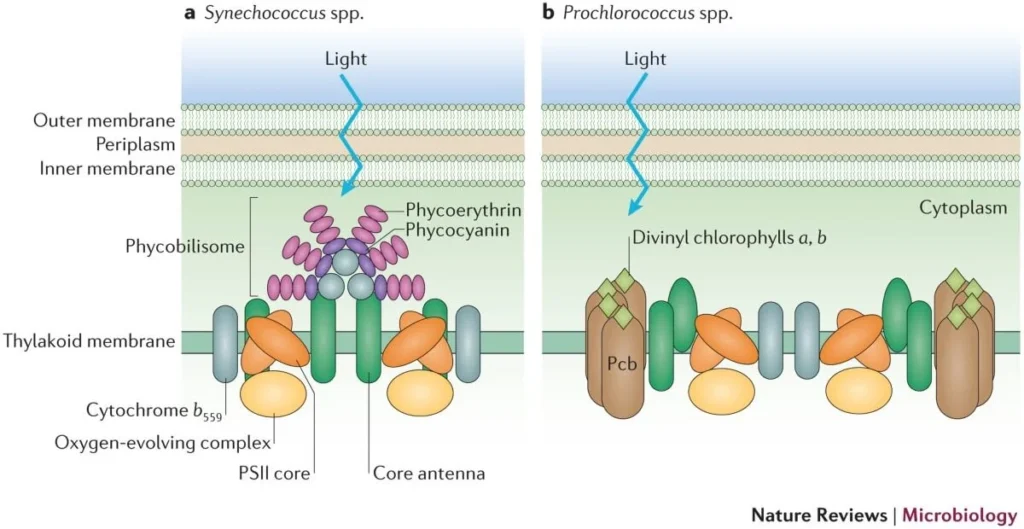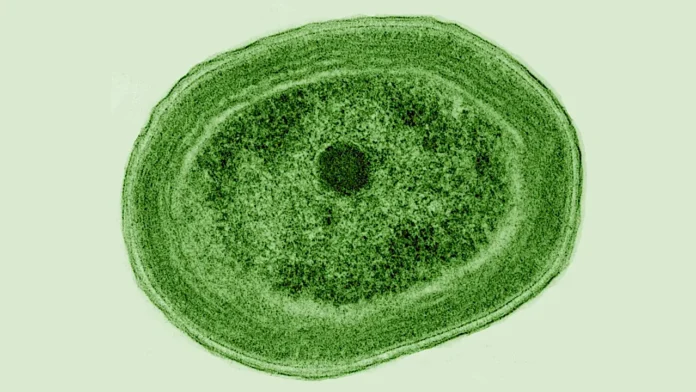Introduction
Prochlorococcus bacteria’s hidden network is a crucial yet overlooked foundation of Earth’s biosphere. These microscopic organisms, so small that a thousand could fit across a human thumbnail, are the most abundant photosynthetic life forms on the planet. Astonishingly, they generate 10% to 20% of the oxygen in our atmosphere, meaning life on Earth depends on their activity. However, recent discoveries suggest that Prochlorococcus is not simply drifting through the vast ocean in isolation—these bacteria are interconnected in ways that redefine our understanding of microbial life.
Scientists at the University of Córdoba recently captured a groundbreaking image of a Prochlorococcus cell extending a long, thin nanotube to connect with another cell. These delicate structures, once thought to be rare, appear to be an integral part of bacterial communication. Through these nanotubes, Prochlorococcus and neighboring Synechococcus bacteria may be sharing resources, nutrients, and even genetic material. This revelation raises fundamental questions: Is Prochlorococcus truly a single-celled organism? Or does it exist as part of a larger, interconnected bacterial network?
The Ocean’s Hidden Microbial Conversations
Prochlorococcus: The Oxygen Engine of the Planet
Prochlorococcus bacteria thrive in the sunlit layers of the ocean, forming the backbone of marine ecosystems. Despite their microscopic size, their global impact is enormous:
- They contribute at least 10% of the oxygen we breathe.
- With an estimated 3 octillion individual cells in the ocean, they outnumber most other living organisms.
- They form the foundation of the marine food chain, supporting everything from tiny plankton to massive whales.
For decades, scientists believed these bacteria functioned independently, each cell drifting through the water and carrying out photosynthesis in solitude. However, emerging research challenges this assumption, revealing a highly structured and interconnected microbial world beneath the surface.

Bacterial Nanotubes: A Revolutionary Discovery
While studying cyanobacteria under a high-powered microscope, microbiologist María del Carmen Muñoz-Marín and her team stumbled upon a stunning sight: Prochlorococcus cells linked together by nanotubes. These delicate bridges, made of bacterial cell membranes, allow the transfer of nutrients and even genetic material between individual bacteria. What was once thought to be an isolated, self-sufficient organism is now seen as part of an intricate microbial network.
Key Findings from Muñoz-Marín’s Research:
- Nanotubes actively connect multiple Prochlorococcus cells, sometimes forming networks of three, four, or even ten bacteria.
- The bacteria also connect with Synechococcus, a related species, suggesting interspecies communication.
- These structures enable resource sharing, potentially allowing bacteria in nutrient-rich areas to support those in less favorable conditions.
The implications of this discovery are profound, reshaping our understanding of bacterial communities and their role in Earth’s ecosystems.
The Social Lives of Ocean Bacteria
Contrary to earlier beliefs, many bacteria exhibit social behaviors that enable survival in extreme conditions. Some species form biofilms, dense bacterial communities that cooperate for protection and nutrient absorption. Others send out tiny vesicles containing DNA and RNA, acting as microscopic messages to neighboring cells.
However, nanotubes represent a more direct and immediate form of bacterial cooperation. Unlike vesicles, which rely on passive diffusion, nanotubes enable:
- Real-time exchange of resources, such as proteins and enzymes.
- Sharing of genetic material, potentially accelerating bacterial evolution.
- Interconnected survival strategies, ensuring the resilience of entire bacterial populations.
This discovery challenges the long-held definition of bacteria as single-celled organisms, suggesting that microbial life is far more cooperative and interconnected than previously imagined.
Why This Matters for Earth’s Ecosystem
Understanding Prochlorococcus networks is not just an academic curiosity—it has major implications for climate science, ocean health, and even biotechnology. Since these bacteria play a central role in the global carbon and oxygen cycles, their interactions influence:
- Carbon Sequestration: Prochlorococcus helps remove carbon dioxide from the atmosphere, mitigating climate change.
- Marine Food Webs: Their stability directly affects oceanic food chains.
- Potential Biotechnological Applications: Learning from bacterial nanotubes could inspire advances in medicine, data transfer, and even synthetic biology.
Conclusion
The discovery of Prochlorococcus nanotube networks is a game-changer in microbiology. These tiny bacteria, once thought to be isolated wanderers, form vast interlinked communities that sustain ocean ecosystems and the very air we breathe. As scientists continue to unravel the complexities of microbial life, one thing is clear: Prochlorococcus is not just an individual cell—it’s a key player in a global network of life.


